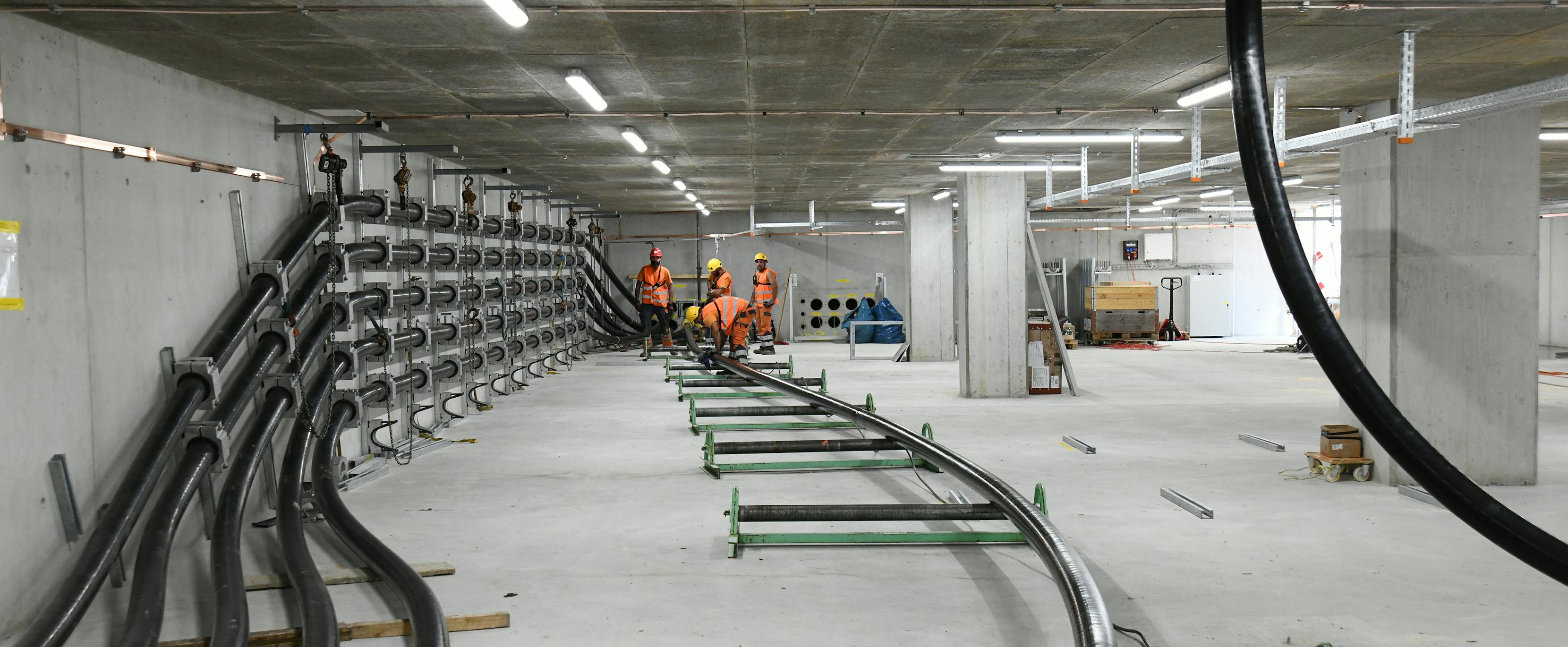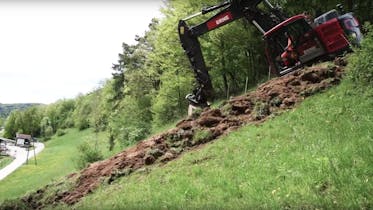Overview
By increasing the voltage between Beznau (AG) and Mettlen (LU) from 220 to 380 kilovolts, Swissgrid is securing the energy distribution and security of supply in the metropolitan area of Zurich, Central Switzerland and the Swiss Central Plateau. The new construction of the approx. 6.5-kilometre Rüfenach – Habsburg section is the last part of the line between Beznau and Birr that has not yet been expanded.
Partial cabling at «Gäbihübel»
The project includes a first for Swissgrid: At Gäbihübel near Bözberg/Riniken, Swissgrid is laying a long section of an extra-high-voltage line underground for the first time. Transition structures will be built at both ends of the 1.3-kilometre section in order to connect the underground cable and overhead line. 5.2 kilometres of new overhead lines connect the underground cabled section to the route of the current line.
Easing the burden on the landscape and residential areas
After the cabling at Gäbihübel is commissioned, the entire overhead line between Rüfenach and Habsburg will be dismantled. As a result, the burden on the residential areas of Neu-Riniken and Hafen will be noticeably eased. Swissgrid considered the landscape as much as possible when positioning the two transition structures and the new section of overhead line.
A shop window for research and the public
At «Gäbihübel», the effects that cabling a long section of extra-high-voltage line has on the landscape and environment, the costs that result from this and the challenges presented in construction, operation and maintenance, will be visible for the first time. Swissgrid will provide scientific support for the project.
The costs for the entire project amount to around CHF 34 million.























































































